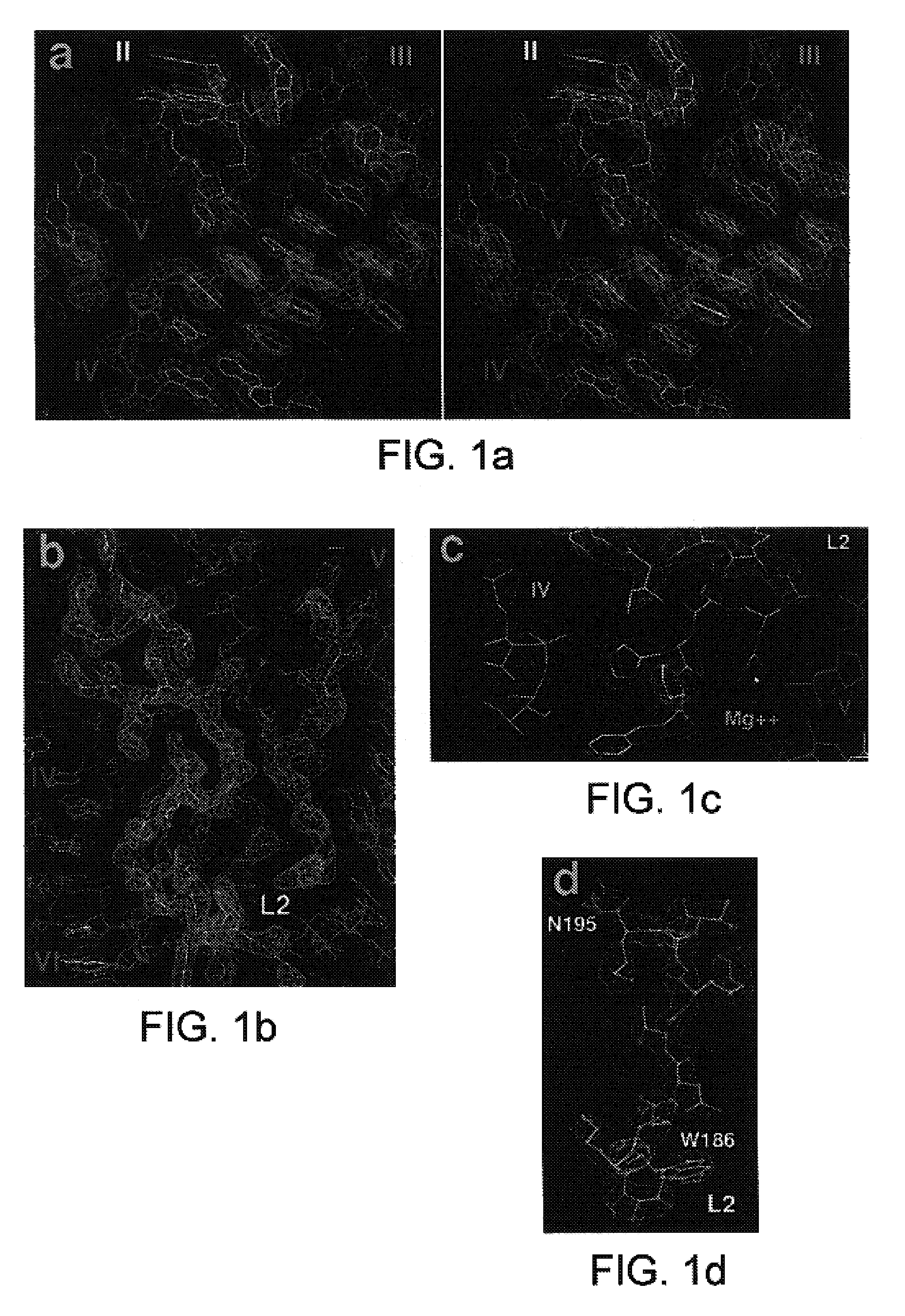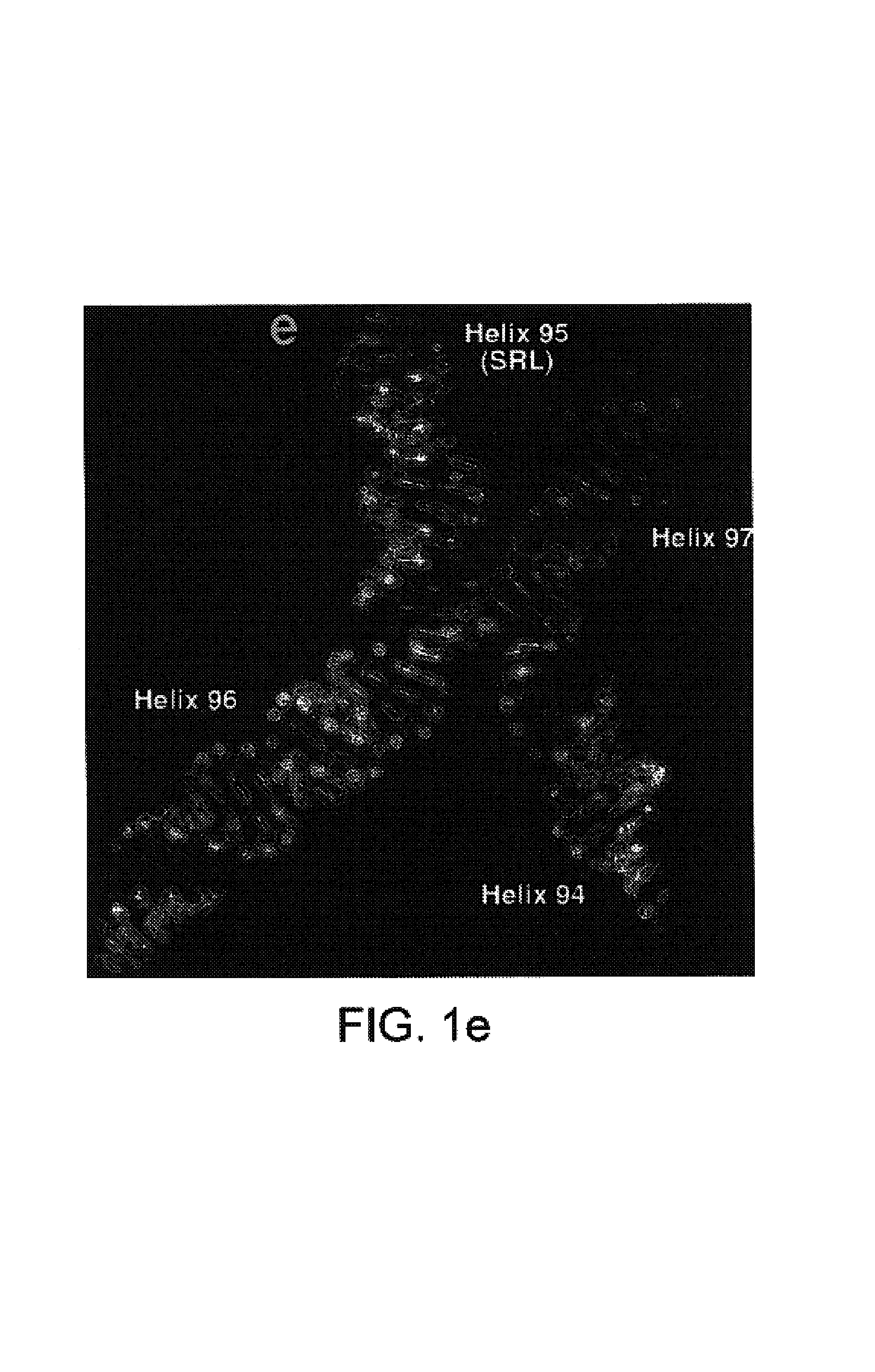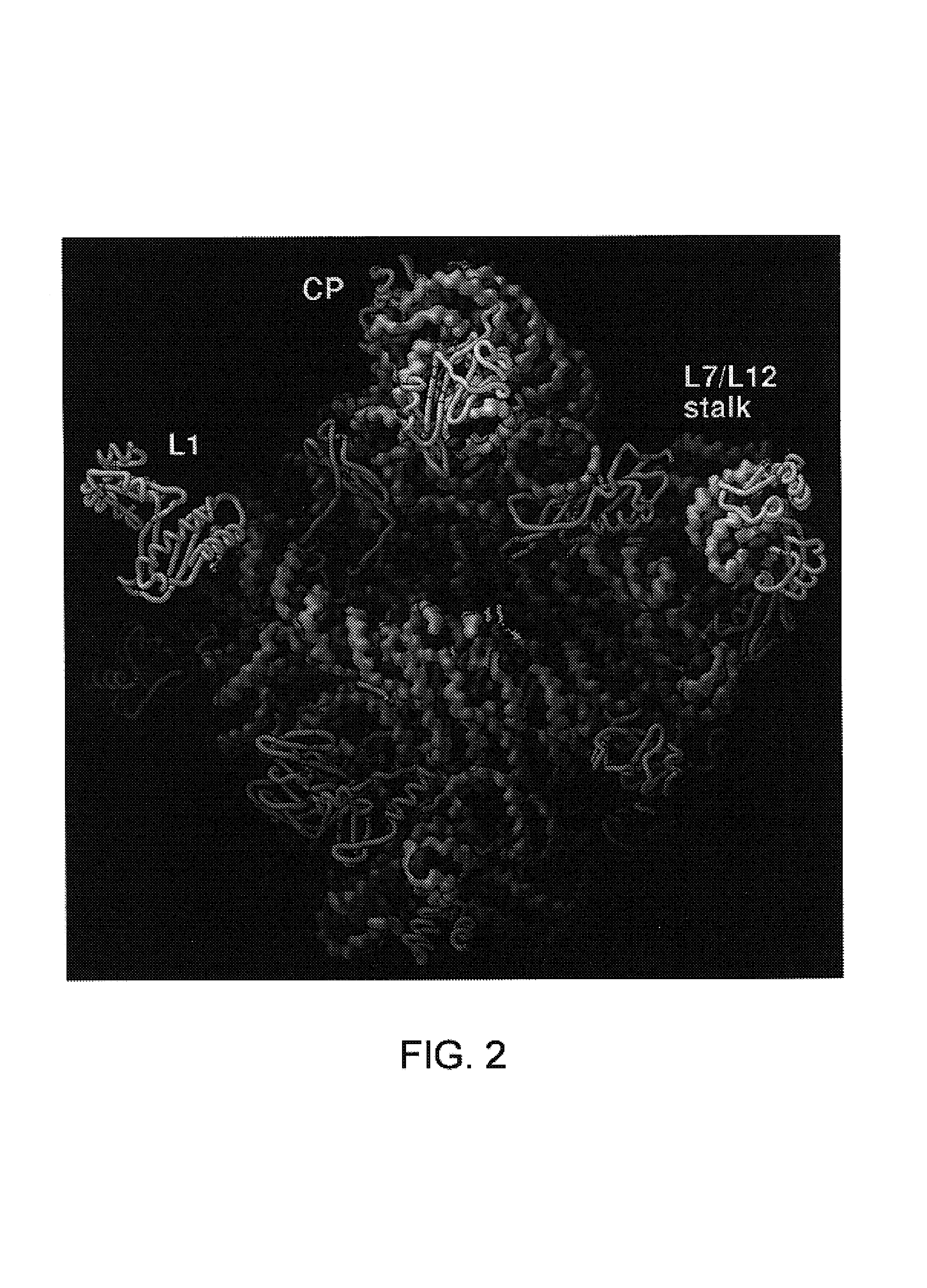Determination and uses of the atomic structures of ribosomes and ribosomal subunits and their ligand complexes
a technology of ribosomes and atomic structures, applied in the field of determination and use of ribosomes and ribosome subunits and their ligand complexes, can solve the problems of ribosomes having inherent flexibility and instability, difficult crystallization of ribosomes, and difficult acquisition of crystals, etc., and achieve the effect of sufficient quality
- Summary
- Abstract
- Description
- Claims
- Application Information
AI Technical Summary
Problems solved by technology
Method used
Image
Examples
specific embodiments
A. Atomic Structure of the Large Ribosomal Subunit at 2.4 Å Resolution
[0184]The present invention is based in part on the development of a novel method for preparing crystals of ribosomes. The novel method provides crystals of the 50S ribosomal subunit that are much thicker than those available earlier and that can diffract X-rays to about 2.4 Å resolution. The newly developed method eliminates the twinning of crystals that obstructed progress in determining the crystal structure of the 50S ribosomal subunit from H. marismortui for many years. The method of preparing the crystals of the 50S ribosomal subunit is discussed below.
[0185]The present invention is also based in part on the atomic structure of the crystal of the 50S ribosomal subunit from H. marismortui that has been derived from a 2.4 Å resolution electron density map that was experimentally phased using heavy atom derivatives. The atomic coordinates of the structure were deposited on Jul. 10, 2000, at Research Collaborato...
example 1
Preparation of 50S Ribosomal Subunit Crystals
[0385]H. marismortui (ATCC 43049) was grown as described previously (Ban et al., 1998) on a slightly modified version of ATCC culture medium 1230, which was supplemented with 4.3 g of yeast extract, 5.1 g of Tris, and 3.4 g of glucose per liter. Bacteria were grown at 37° C. to an OD550nm between 1.0 and 2.2. They were harvested by centrifugation, and stored at −80° C. Cells were ruptured using a French press. Ribosomes were prepared from lysates by centrifugation, and subunits were isolated on sucrose gradients (Shevack et al., 1985).
Reverse Extraction
[0386]1. Take 1 mg of subunits from a concentrated 50S ribosomal subunit stock (30 mg / ml in 1.2 M KCl, 0.5 M NH4Cl, 20 mM MgCl2, Tris 10 mM, CdCl2 1 mM, Tris 5 mM, pH 7.5) and mix with ½ vol. of 30% PEG6000 (300 g PEG, 700 ml H2O to make 1 liter of 30% PEG; filter through 0.2 μm filter)
[0387]Leave on ice for 1 to 2 hr.[0388]2. Spin down precipitate ˜30 sec. using a desktop centrifuge.[0389]...
example 2
Determination of the Crystal Structure of the 50S Ribosomal Subunit
[0413]All data, except the two native data sets, were collected at the National Synchrotron Light Source (Brookhaven) from crystals frozen at 100 K, using beamlines X12b and X25 and recorded using a 345 mm MAR imaging plate. For each heavy atom derivative, anomalous diffraction data were collected at the wavelength corresponding to the peak anomalous scattering. The beam size was 100×100 μm for most data collections at X25 and 200×200 μm at beamline X12b. The crystals were aligned along the long axis of the unit cell (570 Å) so that 1.0° oscillations could be used to collect reflections out to a maximum of 2.7 Å resolution at the edge of the MAR detector. At beamline X12b the crystal to detector distances varied between 450.0 mm and 550.0 mm depending on wavelength, crystal quality and beam divergence, and it was chosen so that maximum resolution data could be collected while avoiding overlapping of spots. At beamlin...
PUM
| Property | Measurement | Unit |
|---|---|---|
| thickness | aaaaa | aaaaa |
| thickness | aaaaa | aaaaa |
| thickness | aaaaa | aaaaa |
Abstract
Description
Claims
Application Information
 Login to View More
Login to View More - R&D
- Intellectual Property
- Life Sciences
- Materials
- Tech Scout
- Unparalleled Data Quality
- Higher Quality Content
- 60% Fewer Hallucinations
Browse by: Latest US Patents, China's latest patents, Technical Efficacy Thesaurus, Application Domain, Technology Topic, Popular Technical Reports.
© 2025 PatSnap. All rights reserved.Legal|Privacy policy|Modern Slavery Act Transparency Statement|Sitemap|About US| Contact US: help@patsnap.com



